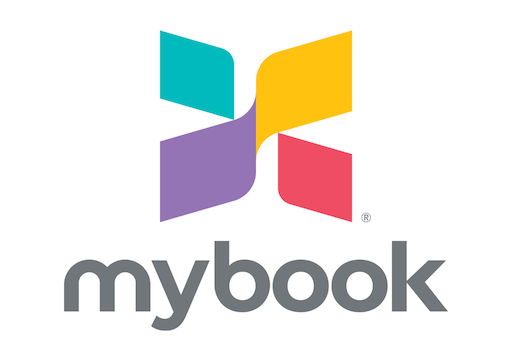
Tell Digital Marketing Requirements as Client: Must-Have Tips
Understanding how to effectively tell digital marketing requirements as a client is crucial for establishing a productive relationship with your marketing team. When setting the stage for your digital marketing campaign, clarity is your best friend. That’s where effective communication can either make or break your marketing efforts.
Know Your Goals
Before diving into the nitty-gritty of your digital marketing requirements, it’s vital to identify your goals. Do you want to increase brand awareness, drive website traffic, or boost sales? Knowing what you want from the onset not only helps you articulate your needs but also gives your marketing team a clear direction.
A personal anecdote springs to mind here: Imagine you’re organizing a birthday bash, but you don’t tell your friends how old you’re turning. Instead, someone suggests a surprise party with a DJ, while you were hoping for a quiet dinner. It’s important to be upfront. Define your goals clearly.
Understand Your Target Audience
One of the key aspects of effective digital marketing is understanding your audience. Who are your ideal customers? What are their preferences? When you provide details about your target demographic, such as age, gender, location, and interests, your marketing team can tailor strategies that resonate.
For instance, if you’re a local coffee shop aiming to attract college students, your approach might involve more social media advertising, highlighting promotions in college directories, and even collaborating with campus organizations. The better your team understands the audience, the more impactful the results.
Define Your Budget
Another essential aspect is your budget. Being open about your financial limits allows your marketing team to design a campaign within those confines. There is a broad spectrum of digital marketing channels—from pay-per-click advertising and social media marketing to search engine optimization (SEO) and content marketing—each with its own cost structure.
Think of this as planning a road trip: if you only have $500 to spend and want to visit multiple states, your marketing team needs to know that so they can plan a route that maximizes your experiences with what you have.
Specify Your Preferred Tools and Platforms
In this digital age, various tools and platforms can help facilitate your marketing efforts. Tell your digital marketing requirements by specifying if you have preferences when it comes to tools for analytics, social media management, or email marketing.
For example, if you’re comfortable using Google Analytics but prefer Mailchimp for email campaigns, sharing this information enables your marketing team to align their efforts with your established preferences, fostering easier collaboration.
Articulate Your Brand Identity
Another must-have tip is to clearly articulate your brand identity—your voice, values, and aesthetic. Are you edgy and bold, or classic and sophisticated? Providing your team with materials like existing branding guidelines, logos, and color palettes helps them represent your brand accurately.
Think of your favorite brands; they create a specific vibe that speaks to you. Whether it’s the cheeky humor of a snack company’s ads or the minimalism of a luxury brand, your marketing team needs to embody your essence.
Be Open to Feedback and Revisions
When discussing your digital marketing requirements, remember to stay flexible. Sometimes strategies that sound good in theory may not yield the anticipated results. Being open to feedback lets your marketing team pivot when necessary and helps them provide better insights based on performance analytics or real-time market shifts.
Imagine a rehearsal for a theater production; the director might suggest changes to your performance during rehearsals based on audience impressions. Taking a cue from that can lead to an outstanding final performance.
Establish Metrics for Success
Last but not least, define how you’ll measure success. Will you look at website traffic, social media engagement, or conversion rates? Agreeing on metrics ensures that everyone is on the same page about what success looks like.
Consider this as aiming for a target; if you don’t know where the bullseye is, you might hit way off the mark. Establishing how you’ll track your progress will not only help in evaluating your current campaign but will also set a precedent for future projects.
Frequently Asked Questions
Q: How do I create a digital marketing budget?
A: Start by defining your marketing goals, then research costs associated with different strategies. Allocate budget based on priorities and always account for room to adjust as data comes in.
Q: What platforms should I focus on for digital marketing?
A: That depends on your target audience! If you’re aiming for younger demographics, platforms like Instagram or TikTok may be ideal. For B2B companies, LinkedIn is more effective.
Q: How do I know if my digital marketing strategy is working?
A: Use agreed-upon metrics for tracking—like conversion rates, website traffic, and engagement numbers. Regularly analyze these metrics to adjust your strategy accordingly.
By knowing how to articulate your digital marketing requirements clearly and effectively, you’re setting a strong foundation for success. Embrace open communication, and watch your marketing efforts flourish!
Stay Updated, Follow me on Social Media:Related Posts
Switch Lead Gen Expert: Effortless Steps for Success
In todays competitive landscape, becoming a switch lead gen expert can transform your approach to business growth. With a focus on building relationships and understanding your audience, youll discover...
Switch Marketing Agency as Client: Effortless Tips for Success
Switching marketing agency as client doesnt have to feel daunting; with a few simple strategies, you can turn this transition into a seamless opportunity for growth and innovation in your marketing efforts....












